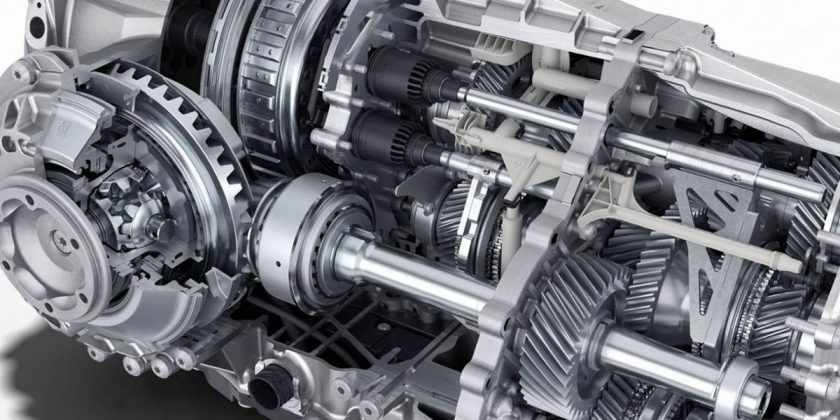A dual-clutch transmission is an automated manual transmission with two sets of gears, each operated by a separate clutch.
Related: Are Manual Transmissions Cheaper to Repair and Maintain Than Automatics?
One clutch handles the odd-numbered gears, the other clutch the even-numbered gears. A transmission control module (i.e., computer) manages when the transmission shifts automatically, eliminating the need for the clutch pedal used on regular manual transmissions.
When one gear is engaged in a DCT, the computer is already queuing up the next gear, so shifts can be faster and smoother than in a conventional torque-converter automatic transmission. Power flow to the transmission also remains constant in a DCT unlike in a manual transmission, where depressing the clutch pedal to shift gears interrupts power flow.
Car companies that offer DCTs claim they combine the convenience of an automatic and the efficiencies of a manual (such as direct engagement of gears instead of through fluid couplings in an automatic), and that DCTs yield higher fuel economy than conventional automatics. However, as the EPA advises, “Your mileage will vary,” so better gas mileage isn’t guaranteed with DCTs.
DCTs are designed to operate fully automatically or let the driver shift gears manually with paddle shifters or the transmission shift lever. Some vehicle owners may not be aware that they have a DCT, only that the transmission shifts automatically.
More From Cars.com:
- What Are Paddle Shifters?
- Why Manual Transmissions Are Dying … and What’ll End Them for Good
- What Does STD Stand For?
- What’s a CVT?
- More Transmission News
Some manufacturers offer DCTs, including BMW, Hyundai, Mercedes-Benz, Porsche and Volkswagen, among others, and particularly on performance models where acceleration and transmission responsiveness are priorities.
Several manufacturers, though, have stuck with conventional automatics, which they say have been improved to shift as quickly as DCTs and can accommodate as many as 10 gears to boost fuel economy. Others have embraced continuously variable automatic transmissions, which eliminate the traditional shifting through a series of set gears. Instead, CVTs operate like rheostats, gradually changing gear ratios up or down, as on a dimmer switch for lights.
Related Video:
Cars.com’s Editorial department is your source for automotive news and reviews. In line with Cars.com’s long-standing ethics policy, editors and reviewers don’t accept gifts or free trips from automakers. The Editorial department is independent of Cars.com’s advertising, sales and sponsored content departments.
Source: Read Full Article

